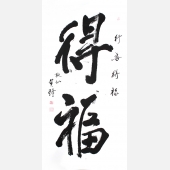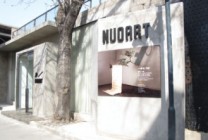- 资质:艺
- 评分:
1分 2分 3分 4分 5分 6分 7分 8分 9分 10分 1分
- 印象:
- 经营时间:15年
- 展厅面积:300平米
- 地 区:北京-朝阳
自然
2014-08-01 11:48:23
策展人:戴卓群
艺术家:梁绍基,尚扬,谭平,王光乐,杨心广
展览日期:2014年4月19日-6月19日
开幕时间: 2014年4月19日下午3点
展览地点:NUOART
将“自然”做为展览概念提出,试图重新评估回归常识和原旨的知识探讨可能。在二十世纪往前追溯遥久的历史时期,中国的艺术和诗学传统自始至终崇信造化自然,相信“自然”就是艺术本身,并将自然之能指不断引向深入且延展意义。
当我试图寻找一种恰当的语言来描述今日中国艺术家们在东西文化纠离中几近尴尬和错愕的表达方式的时候,再无法心安理得地袭用西方艺术评价系统的一整套流利修辞。而针对本土自身语境的独立语汇和评价体系只在古美术的领域具有持久旺盛和自给自足的研究。同时我并不打算将当下充满矛盾与寻根心切的艺术景象具体称为好似本尼迪克特•安德森广泛而脍炙人口的“想象的共同体”之类属,原因很简单,极端而狭隘的类民族主义立场将轻易把我们引向封闭的堡垒。此时,回到常识将成为重新展开知识审断和经验建构的起点。
事实上,当我们将“自然”做为对象来观照时,我们其实是在讨论有关“自然”的观念,在受到时空和地域所限制的迥然不同之文化语境中,其观念均呈现为差异和多元的态度与形式。
“自然”这一概念,最早在老子的《道德经》确立其体与性,所谓“道法自然”,自然即是道,这一哲学阐释在源头上奠定了“自然”在中国诗学与美学中无可比拟的形而上地位。数千年中国艺术史就是一幅围绕“自然”逶迤展开的风格长卷,而对于“自然”义理的阐发从先秦老庄到魏晋玄学及至后世禅宗一路均有系统性构建。
不期而然的是,对“自然”概念的认知在西方知识生成中与东方智慧遥通款曲,英文metaphysics一词源自希腊语:metá,意思是之后或之上,而 physiká在希腊语原意是“自然,自然的产物”,两个字根组合起来metaphysica的意思就是“在自然之后”。中文译名“形而上学”取自《易经》中“形而上者谓之道”一语,为日本人井上哲次郎由metaphysic翻译而来。古希腊哲学家亚里士多德在其《形而上学》一书中探讨了自然背后的永恒不变的本体。
在中国古代山水画的品评框架里,绘画的真谛则决不在于呈现自然的形象,而着意的是心与物游、澄怀观道,这种价值无论如何都是抽象的,和画之所以为画并不是简单表象的关联,而重在形与神处,酝酿风格,锤炼精确、自足的形式和语言,达到任其自然,至一至道。
此次展览于当下情境中重提“自然”,并做为我们籍此展开对艺术本体性讨论的进路,通过呈现梁绍基、尚扬、谭平、王光乐、杨心广共五位艺术家的思考与实验,从多面向呈现出当下观念就艺术元问题的再审视以及新艺术风格的重构与世变。而此次的讨论,仅只是一个微观切片,更多立足形式语言进行不懈探求的个体实践,正以富有开拓性的创见在无限绵延的时空静水深流。
The Nature
Curator: Dai Zhuoqun
Artists:Liang Shaoji, Shang Yang, Tan Ping, Wang Guangle, Yang Xinguang
Duration:2014.4.19
Reception:2014.4.19 3pm
Venue:NUOART
The "nature" was put forward as the exhibition concept, trying to re-evaluate the possibility of returning to common sense and knowledge exploration of the original purpose. In the twentieth century farther back to the long historical period, people believed that China's traditional art and poetry were in thrall to the nature, believing that "nature" is the art itself and continuing to deepen and extend the meaning of “nature”.
When I tried to find an appropriate language to describe today's Chinese artists’ embarrassed and stunned expression in facing the Eastern and Western cultures, I no longer felt at ease and justified to follow a set of fluent rhetoric of western art evaluation system. But for independent vocabulary and evaluation system in native context, it only has persistent and self-sufficient research in the field of ancient art. At the same time I do not intend to call the current art scene full of contradiction seemingly as Benedict Anderson’s popular “Anti-colonial Imagination”. The reason is very simple that extreme and narrow nationalism position will easily leads us to a closed fort. In this case, back to common sense will become the starting point of re-carrying out knowledge judgment and experience construction.
In fact, when we review “nature” as an object, we actually are talking about the concept of “nature”. In different cultural context subject to time and space, their ideas were presented in different and multiple manners and forms.
The concept “nature” was early established in Lao Tzu’s Tao Te Ching. The so-called “The law of the Tao is its being what it is”, that is the nature is Tao. This philosophical interpretation laid an unparalleled metaphysical status for “nature” in Chinese poetry and aesthetics at the source. Thousand years of Chinese art history is a long meandering style scroll slowly unfolding around “nature”, while the explanation of argumentation of “nature” has a systematic way from Lao Zhuang in Pre-Qin Dynasty to metaphysics in Wei and Jin dynasties and later Zen Buddhism.
However, the perception of concept of "nature" has some similarities in generation of western knowledge and Eastern wisdom. The English word “metaphysics” origins from Greek “metá”, which means after or above, while “physiká” in Greek means “nature or production of nature”, the word “metaphysica” by the combination of two wordroots means “after nature”. The Chinese translation is “Xing Er Shang Xue” which is abstracted from “That which is antecedent to Xing (the material form) exists, we say as the Dao” in "Book of Changes". This expression was translated by the Japanese Tetsujiro Inoue from word “metaphysic”. The ancient Greek philosopher Aristotle explored the eternal body behind nature in his book “Metaphysics”.
In the framework of the ancient Chinese landscape painting, the essence of painting is never rendered image of nature, but focus on mind developing around matter and clearing the mind and find rule (the highest truth of the universe). This value anyway is abstract and it is not simply associated with painting, while focuses on precise and self-contained form and language to achieve its Tao of “nature”.
The exhibition re-mentions "nature" in the present situation and considered as an approach for us to carry out the discussion of art. By presenting thoughts and experiences of artists Liang Shaoji, Shang Yang, Tan Ping, Wang Guangle and Yang Xinguang, the exhibition presents the reexamination of artistic element and reconstruction and change of new artistic style from various aspects. This discussion is mainly based on formal language so as to have the tireless quest for individual practice, which is running in infinite stretches of time and space with pioneering ideas.
上一篇:以微见著 — 伍伟个展
下一篇:单调

 黄琦
黄琦 测试用艺术
测试用艺术




